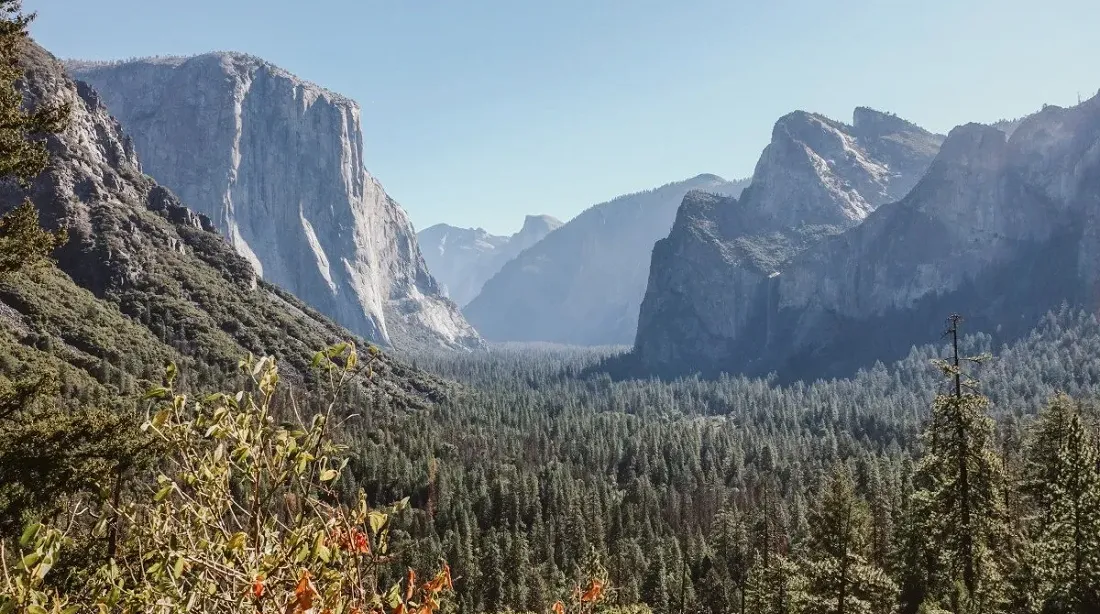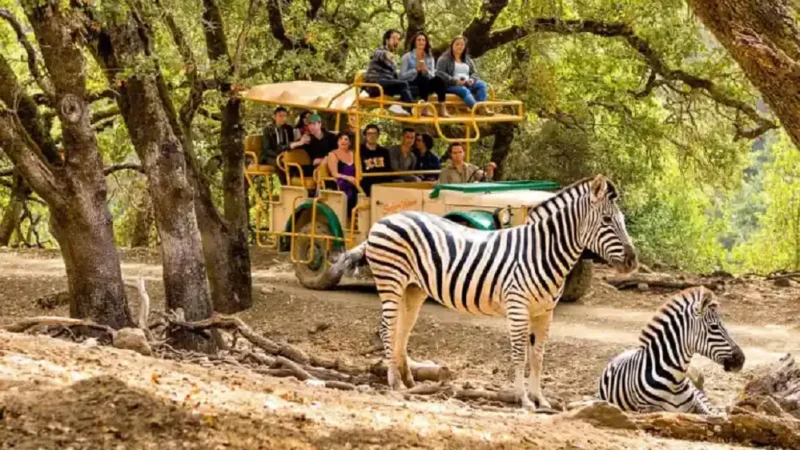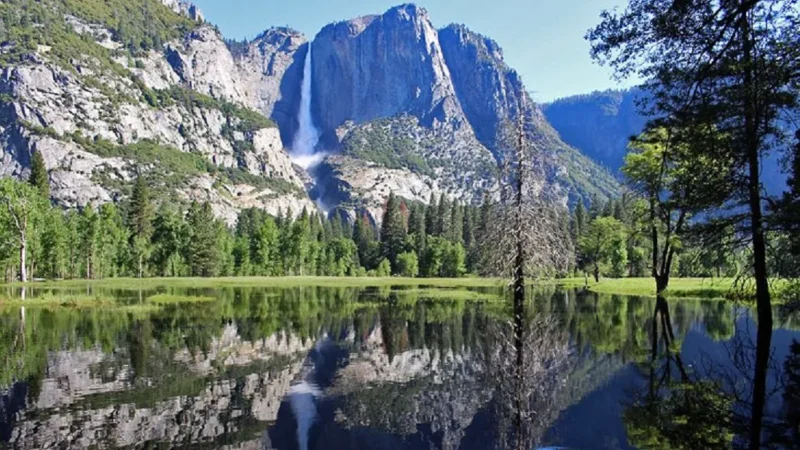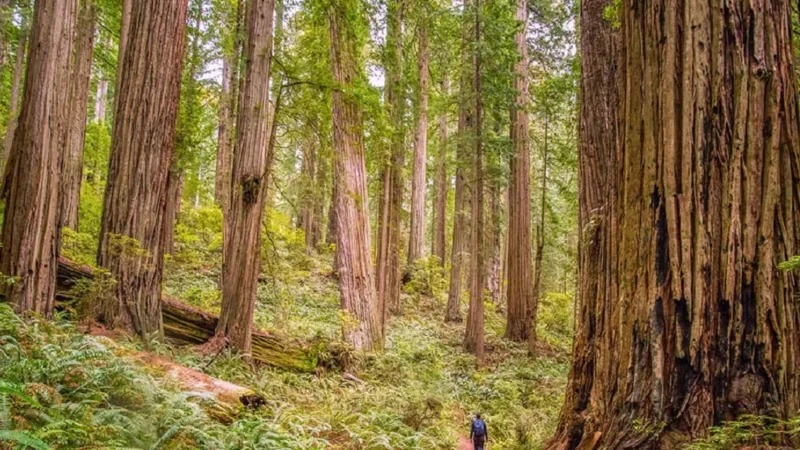Best National Parks in Northern California

Table of Contents
ToggleNational Parks in North California -
Welcome to my blog, where we embark on a journey through the awe-inspiring national parks of Northern California. From ancient redwood forests to dramatic volcanic landscapes, this region is home to some of the most breathtaking natural wonders in the United States. Join me as we delve into the pristine wilderness, encounter diverse wildlife, and uncover the hidden gems that make these national parks remarkable.
Northern California boasts a collection of national parks and protected areas that offer a myriad of outdoor adventures and opportunities for exploration. From the towering giants of Redwood National and State Parks to the dramatic cliffs of Point Reyes National Seashore, each park has its unique charm and allure.
1- Redwood National Park
Redwood National Park is a component of the larger Redwood National and State Parks complex, located on the northern coast of California. It is a designated UNESCO World Heritage Site and International Biosphere Reserve. Here’s more information about Redwood National Park:
- Ancient Redwoods: The park is renowned for its towering coast redwood trees (Sequoia sempervirens), among Earth’s tallest and oldest living organisms. These majestic giants can reach over 300 feet (91 meters) and live for over 2,000 years.
- Scenic Drives: The park offers several scenic drives that wind through the redwood forest, allowing visitors to immerse themselves in the breathtaking beauty of the towering trees. The Newton B. Drury Scenic Parkway and the Howland Hill Road are popular routes for experiencing the park’s natural splendor.
- Hiking Trails: Numerous hiking trails within Redwood National Park cater to various skill levels and interests. The Lady Bird Johnson Grove Trail is popular, offering a peaceful walk through a grove of ancient redwoods. The Tall Trees Trail leads to some of the tallest trees in the park but requires a permit to access.
- Wildlife and Nature: The park is home to a diverse array of wildlife, including Roosevelt elk, black bears, bobcats, and various bird species. The coastal environment allows spotting marine life, such as seals and whales.
- Camping and Recreation: Redwood National Park offers camping facilities at various locations, allowing visitors to spend more time in the park and immerse themselves in the natural surroundings. Activities like fishing, horseback riding, and picnicking are available within the park.
Visiting Redwood National Park provides an awe-inspiring experience, allowing visitors to witness the grandeur of ancient redwoods, explore lush forests, and connect with the beauty of nature.
2- Lassen Volcanic National Park
Lassen Volcanic National Park is a captivating national park located in northeastern California. It is renowned for its volcanic landscapes, hydrothermal features, and pristine wilderness. Here’s more information about Lassen Volcanic National Park:
- Volcanic Activity: The park is home to numerous volcanic features, including Lassen Peak, the largest plug dome volcano in the world. Lassen Peak last erupted between 1914 and 1917, leaving fascinating lava flows, cinder cones, and other volcanic formations behind.
- Hydrothermal Areas: Lassen Volcanic National Park boasts several hydrothermal areas with bubbling mud pots, steaming fumaroles, and hissing steam vents. The most famous hydrothermal area is Bumpass Hell, where visitors can witness the park’s geothermal activity up close.
- Hiking and Scenic Drives: The park offers a variety of hiking trails that showcase its natural beauty and volcanic landscapes. The Lassen Peak Trail is a challenging but rewarding hike that leads to the summit of Lassen Peak, providing panoramic views of the surrounding area. The park also features scenic drives like the Lassen Volcanic National Park Highway, offering breathtaking vistas and trailhead access.
- Lakes and Waterfalls: Lassen Volcanic National Park has pristine alpine lakes, including Manzanita Lake, Juniper Lake, and Summit Lake. These lakes provide opportunities for fishing, kayaking, and picnicking. The park also features beautiful waterfalls like Kings Creek Falls and Mill Creek Falls.
- Outdoor Recreation: The park offers a range of recreational activities, including camping, backpacking, wildlife watching, and winter activities like snowshoeing and cross-country skiing. The winter season transforms the park into a snowy wonderland, with opportunities for snow play and winter sports.
Lassen Volcanic National Park showcases the power and beauty of volcanic landscapes, allowing visitors to explore unique geological formations, marvel at hydrothermal features, and immerse themselves in the park’s natural wonders.
3- Point Reyes National Seashore
Point Reyes National Seashore is a stunning coastal preserve in Marin County, California. It is known for its diverse ecosystems, rugged coastline, and abundant wildlife. Here’s more information about Point Reyes National Seashore:
- Coastal Beauty: The seashore stretches approximately 71,000 acres (287 square kilometers) of the Point Reyes Peninsula, encompassing rugged cliffs, sandy beaches, tidal marshes, and grassy coastal hills. The dramatic coastal scenery, with crashing waves and panoramic views, is a highlight of the park.
- Wildlife and Biodiversity: Point Reyes National Seashore is home to a remarkable array of wildlife. It provides habitat for more than 490 species of birds, including migratory shorebirds and raptors. It is also a haven for marine life, with seals, sea lions, and even migrating gray whales often spotted offshore.
- Historic Lighthouse: The Point Reyes Lighthouse, located at the westernmost point of the peninsula, is an iconic feature of the seashore. Visitors can explore the lighthouse, which dates back to 1870, and enjoy the panoramic views of the coastline from the overlook.
- Hiking and Outdoor Activities: The seashore offers an extensive network of hiking trails that wind through varied landscapes, including coastal bluffs, forests, and meadows. The famous Tomales Point Trail leads to a scenic overlook with breathtaking views of the Pacific Ocean and is known for its Tule elk herds.
- Beaches and Recreation: Point Reyes National Seashore boasts several picturesque beaches, such as Limantour Beach, Drakes Beach, and Heart’s Desire Beach. These sandy stretches are perfect for beachcombing, picnicking, birdwatching, and even tidepool exploration.
- Environmental and Cultural Preservation: The seashore is dedicated to preserving its natural and cultural heritage. It aims to protect the area’s unique ecosystems, including the Point Reyes Cypress groves and the rare Bishop pine forests. The park also features historic ranches and cultural sites that showcase the area’s human history and ranching heritage.
Point Reyes National Seashore offers visitors a chance to experience the beauty of California’s coastline, immerse themselves in nature, and appreciate the park’s ecological significance. Whether it’s wildlife watching, hiking, beach activities, or exploring historical sites, there’s something for everyone to enjoy in this captivating coastal preserve.
4- Pinnacles National Park
Pinnacles National Park is a remarkable national park located in central California. It is known for its unique rock formations, stunning caves, and diverse plant and animal life. Here’s more information about Pinnacles National Park:
- Rock Formations: The park has towering rock spires, craggy cliffs, and massive boulders. These formations result from volcanic activity and tectonic movement millions of years ago. The park provides opportunities for rock climbing, offering challenges for climbers of all skill levels.
- Caves and Talus Tunnels: Pinnacles National Park is famous for its talus caves, formed by massive boulders wedged into narrow canyons. Visitors can explore these unique caves, such as Bear Gulch Cave and Balconies Cave, by hiking through them with flashlights. The park also features the historic Bear Gulch Reservoir and the Bear Gulch Talus Cave, which houses a colony of Townsend’s big-eared bats.
- Hiking and Trails: Pinnacles National Park offers a trail network that leads visitors through the park’s diverse landscapes. The High Peaks Trail provides panoramic views of the rock formations, while the Bear Gulch Trail takes hikers through the Bear Gulch Reservoir and caves. The park is also home to the iconic Bench Trail, which leads to the park’s east entrance and offers stunning vistas.
- Wildlife and Nature: Pinnacles National Park is recognized as a significant habitat for various plant and animal species. It is a release site for the endangered California condor, and visitors may have the opportunity to spot these majestic birds soaring above the park. The park is also home to other wildlife, including bobcats, gray foxes, and various reptiles and amphibians.
- Camping and Recreation: Pinnacles National Park offers camping facilities, allowing visitors to extend their stay and fully immerse themselves in the park’s natural beauty. The park provides picnic areas, rock climbing opportunities, birdwatching, and stargazing due to its International Dark Sky Park designation.
Pinnacles National Park provides a captivating landscape with its unique rock formations, scenic trails, and opportunities for adventure. Whether exploring the caves, hiking to the high peaks, or observing the diverse wildlife, visitors have a memorable experience in this beautiful park.
5- Lava Beds National Monument
Lava Beds National Monument is a unique and captivating protected area in northeastern California. It is known for its volcanic landscapes, ancient lava flows, and abundant lava tube caves. Here’s more information about Lava Beds National Monument:
- Volcanic Features: Lava Beds National Monument is characterized by its volcanic features, including lava flows, cinder cones, spatter cones, and volcanic craters. The monument preserves diverse volcanic formations, showcasing the region’s volcanic history and geology.
- Lava Tube Caves: The park is famous for its extensive system of lava tube caves, formed when the outer layers of lava cooled and hardened while the molten lava inside continued to flow. Visitors can explore the caves, some easily accessible, while others require more advanced spelunking skills. Mushpot Cave is the only cave in the monument that offers interpretive tours.
- Petroglyphs and Cultural Heritage: Lava Beds National Monument has a significant collection of Native American rock art and petroglyphs. Visitors can discover these ancient symbols etched into the rocks, providing a glimpse into the region’s rich cultural history.
- Outdoor Recreation: The monument offers various recreational opportunities. Visitors can hike on scenic trails that wind through lava flows and volcanic landscapes, offering stunning views and opportunities to observe wildlife. Additionally, the monument provides opportunities for camping, picnicking, birdwatching, and stargazing.
- Tule Lake National Wildlife Refuge: Adjacent to Lava Beds National Monument is the Tule Lake National Wildlife Refuge, which provides habitat for migratory birds, waterfowl, and other wildlife. The refuge offers opportunities for birdwatching, wildlife photography, and environmental education.
Lava Beds National Monument offers a unique and otherworldly experience, allowing visitors to explore volcanic landscapes, venture into lava tube caves, and appreciate the region’s cultural heritage. It is a destination for outdoor enthusiasts, geology enthusiasts, and those seeking to connect with the natural and cultural history of the area.
6- Whiskeytown National Recreation Area
Whiskeytown National Recreation Area is a beautiful and diverse outdoor destination in Northern California, near Redding. The recreation area is centered around Whiskeytown Lake, surrounded by scenic mountains, lush forests, and numerous outdoor recreational opportunities. Here’s more information about Whiskeytown National Recreation Area:
- Whiskeytown Lake: The centerpiece of the recreation area is Whiskeytown Lake, a sprawling reservoir renowned for its crystal-clear waters. The lake offers boating, kayaking, paddleboarding, swimming, and fishing opportunities. Several beaches along the shore allow visitors to relax and enjoy the scenic beauty.
- Waterfalls: Whiskeytown National Recreation Area is home to several stunning waterfalls. The most famous is Whiskeytown Falls, a 220-foot (67-meter) cascading waterfall that can be reached via a challenging hike. Other notable waterfalls include Brandy Creek Falls and Boulder Creek Falls, offering scenic hiking trails.
- Hiking and Trails: The recreation area provides a network of hiking trails that wind through diverse landscapes, including forests, meadows, and along the lake’s shoreline. Popular trails include the James K. Carr Trail, the Clear Creek Canal Trail, and the Shasta Divide Nature Trail. These trails offer opportunities for wildlife viewing, birdwatching, and enjoying the park’s natural beauty.
- Cultural Heritage: Whiskeytown National Recreation Area also has a rich historical heritage. Visitors can explore the remnants of the Gold Rush era, such as the Camden House and Tower House Historic Districts. Interpretive exhibits and guided tours provide insight into the area’s mining history and the Native American culture that predates European settlement.
- Camping and Picnicking: The recreation area offers camping facilities for tents and RVs. Seated campsites along the lake provide a chance to immerse in the tranquil surroundings. Picnic areas are also available throughout the park, where visitors can enjoy a meal while enjoying the natural beauty.
Whiskeytown National Recreation Area is a haven for outdoor enthusiasts, offering various activities amidst picturesque landscapes. Whether boating on the lake, exploring waterfalls, hiking scenic trails, or learning about the region’s history, visitors will find something to enjoy in this scenic and diverse recreation area.






